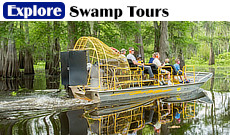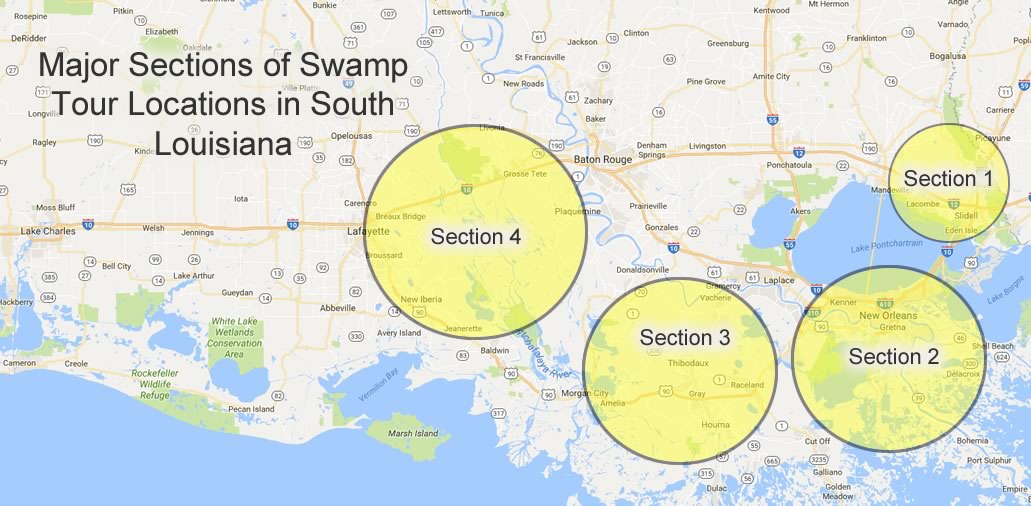
Louisiana Alligators
The American Alligator (Alligator mississippiensis) is the largest reptile in North America. The name alligator comes from early Spanish explorers who called them "el legarto" or "big lizard" when they first saw these giant reptiles.
 The Atchafalaya Basin in Louisiana is home to a large alligator population, and site of the filming of the hit History Channel TV Series "Swamp People" |
Many in
Louisiana and across the country have an interest in, and fascination with, the alligator. A variety of swamp tours, alligator tours, alligator ranches, alligator expeditions, alligator parks, and nature tours cater to tourists in Louisiana.
The first reptiles appeared 300 million years ago and ancestors of the American alligator (Alligator Mississippiensis) appeared 160 million years ago.
Alligators have been harvested in Louisiana for over 200 years. These alligators are harvested for their skins which are to make boots, shoes, belts, and saddles, and in years past their oil was used to grease steam engines and cotton mills.
Their meat is also considered a delicacy, has a very mild taste, and is a versatile substitute in recipes calling for veal, chicken, and most seafood. Alligator is also low in fat.
Today, the alligator remains a commercial, renewable natural resource through sustainable wild harvest and alligator farming.
Alligator Sizes
Females can grow to approximately 9' in length and 400+ pounds. Males can grow to approximately 13'+ in length and attain weights of nearly 1,000 pounds.
Louisiana Alligator Harvesting Program
The State of Louisiana administers an alligator program in which ranchers collect over 350,000 alligator eggs, trappers harvest over 30,000 wild alligators and farmers harvest over 250,000 farm raised alligators annually. Raw meat and hide values are estimated at over $10 million for the wild harvest, and over $40 million for the farm harvest annually.
The Louisiana Department of Wildlife & Fisheries (LDWF) manages the American alligator as a commercial, renewable natural resource. LDWF's sustained use program is one of the world's most recognizable examples of a wildlife conservation success story. Louisiana's program has been used as a model for managing various crocodilian species throughout the world.
Since the inception of LDWF’s wild harvest program in 1972, over 1,000,000 wild alligators have been harvested and sold bringing in millions of dollars of revenue to landowners and trappers. Conservative estimates have valued these resources at over $320,000,000, providing significant, direct economic benefit to Louisiana.
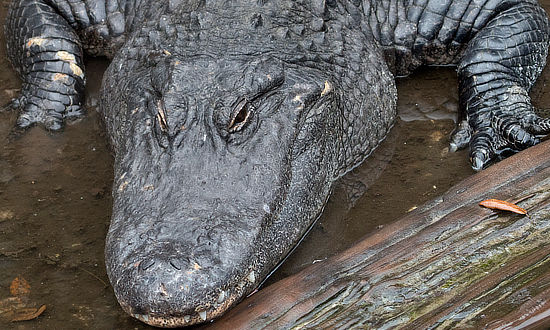 The Louisiana Alligator ... Up close and personal! |
LDWF sets seasons using data collected over several months via high-technology such as GIS to determine alligator populations. Alligator hunters apply for alligator tags prior to the season. The alligator hunter application includes a license application form containing alligator hunter information, a legal description and map of the property to be hunted, and a landowner’s signature indicating permission for the hunter to harvest alligators on the property.
LDWF personnel review each alligator hunting application and enter each property into a GIS computer system which assesses property acreage by habitat type and makes appropriate tag allocations (the number of alligators that may be harvested from that specific rproperty).
Prior to the wild alligator season, alligator hunters travel to the LDWF office where they are issued the appropriate licenses and alligator tags.
Currently over 2,000 licensed alligator hunters harvest 30,000 to 35,000 wild alligators annually in Louisiana.
Alligator Season Dates in Louisiana
 The Louisiana Alligator ... subject of the hunt on "Swamp People" (Staff Photo) |
East Zone - Opens last Wednesday in August (season lasts 60 calendar days)
West Zone - Opens first Wednesday of September (season lasts 60 calendar days)
Alligator Prices
In the late 1980s, alligator prices peaked at over $40/foot, but by 2010 a big size gator went for only $15/foot.
Prices went up again in 2011: 5’ gators were worth $4/foot whole, and $6/foot skinned. A whole 8-foot alligator might be worth $22/foot in 2011, and a skinned one could sell for $24/foot. Any gator 9-feet or longer was worth $26/foot whole and $28/foot skinned.
Swamp People
Today, the story of alligator hunting in Louisiana is being told on the TV series "Swamp People" on the History Channel. Swamp People debuted in August of 2010, and has become a runaway hit ever since.
Swamp People Season 16 debuted on the History Channel on January 2, 2025!
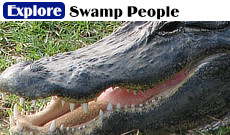 |
The show follows a group of alligator hunters during the 60-day Louisiana alligator season in various areas of South Louisiana, including the huge Atchafalaya Swamp in the Atchafalaya Basin in south central Louisiana. Our family roots are from nearby Paincourtville, Napoleonville, Plattenville and Labadieville, where my grandfather worked in the sugar cane fields along Bayou Lafourche.
Various episodes of the "Swamp People" series are filmed in South Louisiana, including Bayou Sorrel, Honey Island, Bayou Pigeon, Pierre Part, Morgan City, Houma, Pecan Island and other locales.
Several of the alligator hunters have become celebrities, such as Troy and Jacob Landry, Elizabeth Cavalier, Bruce Mitchell, Junior Edwards, and others.
"Choot 'em" is a phrase heard popularized by Swamp People, voiced by gator hunter Troy Landry of Pierre Part, a small community in the swamp close to the cities of Donaldsonville and Thibodaux, and Lake Verret. To learn more, visit Troy Landry's website at ChootEm.com
Louisiana Swamp Tours
One of the most popular things to do for visitors to Louisiana is touring the swamps! Most tours are concentrated in South Louisiana as shown in the map below of major concentrations of swamp tours.
In the greater New Orleans area, there are many swamp tour options in communities such as Marrero, Westwego, Braithwaite, Lafitte, Des Allemands and Laplace.
Others tours originate in South Louisiana cities such as Breaux Bridge, Henderson, Slidell and Thibodaux as well as in the Atchafalaya Basin.
Photographs of Louisiana Alligators
Alligator taking a sun tan in a Louisiana swamp! |
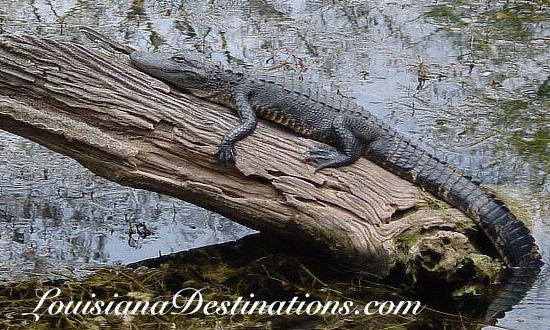 |
Louisiana alligator basking in the sun |
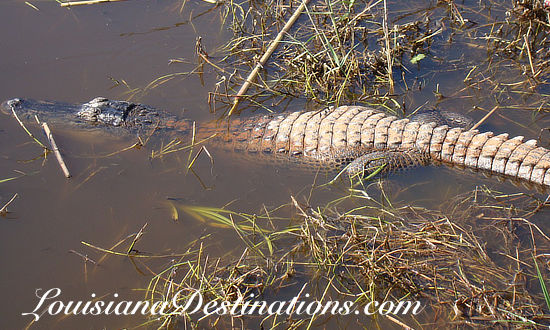 |
Alligator swimming in canal near Pecan Island, Louisiana |
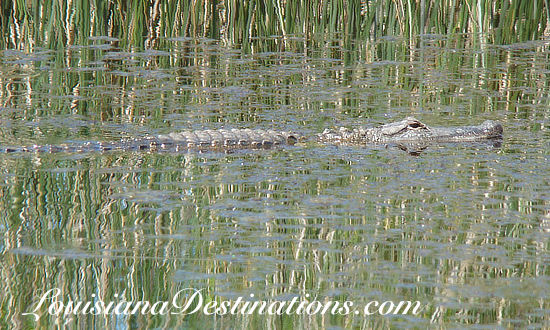 |
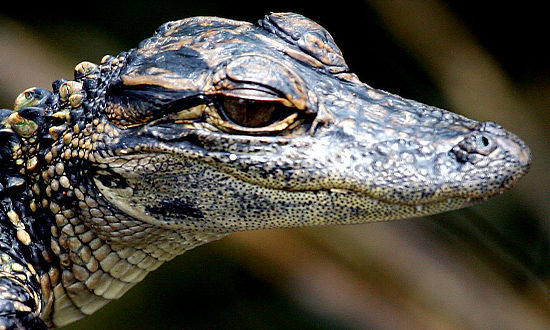 |
 |
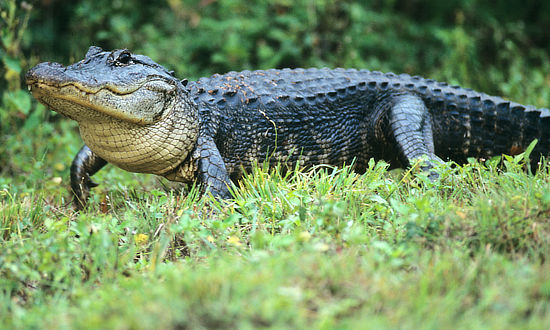 |
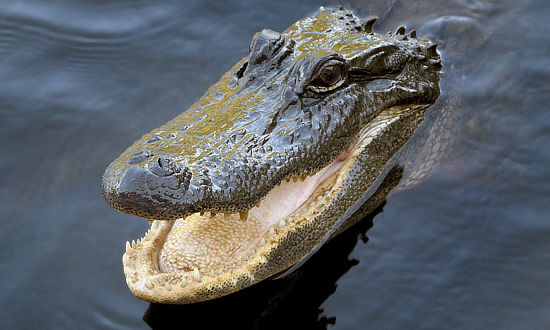 |
Links of Interest about Louisiana and Alligators
- Louisiana Alligator Program at the Louisiana Department of Wildlife & Fisheries
- Louisiana Alligator Advisory Council
- History Channel
- Swamp People on History Channel
- Troy Landry's website ChootEm.com
- WeLoveCrawfish.com
